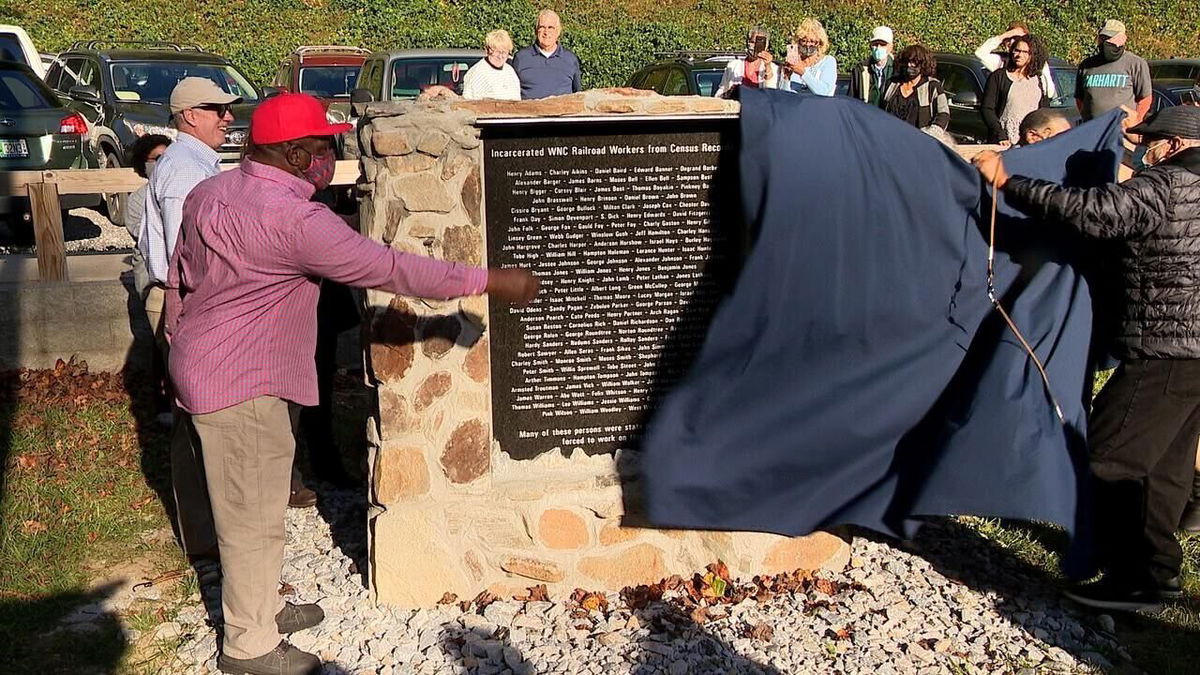New memorial in North Carolina recognize incarcerated laborers’ contribution to railroads

A new memorial can be found at the site of Old Fort's Andrews Geyser
By WLOS Staff
Click here for updates on this story
OLD FORT, North Carolina (WLOS) — A new memorial can be found at the site of Old Fort’s Andrews Geyser, commemorating the forgotten railroad workers who helped pave the way for easier access and travel throughout North Carolina’s western mountains.
On Oct. 17, The RAIL Project, a committee of local historians, activists and community members, unveiled a memorial that explains the significant railroad work done by incararated laborers, many who were African Americans. Organizers say the memorial is just one way to help people understand how “one of the greatest human accomplishments in regards to both engineering and construction ever undertaken at the time” came to fruition.
Below is an excerpt from the RAIL Project’s website:
“Many people are aware that the railroad provided the first dependable access to and from much of Western North Carolina for the rest of the state as well as much of the nation. Many also know the names of some of those who were instrumental in seeing through the completion of this ambitious project. Names such as Colonel Alexander Boyd Andrews, of Andrews’ Geyser fame. However, what most people are unaware of is that at least 95% of the labor which built the railroad across the Blue Ridge Escarpment was completed by inmates from the North Carolina State Penitentiary and approximately 98% of those inmates were African American men the majority of whom were unjustly imprisoned”
Coinciding with the memorial’s unveiling, a new exhibit also debuted at Old Fort’s Mountain Gateway Museum: “The Price of Progress: Remembering the WNC Railroad and the People Who Built It.” The free exhibit is open to the public and tells the story of how the Western North Carolina Railroad (WNCRR) paved the way for trade and tourism in the area, how workers constructed six tunnels across the mountainous region and how as many as 400 laborers died along the way.
Please note: This content carries a strict local market embargo. If you share the same market as the contributor of this article, you may not use it on any platform.